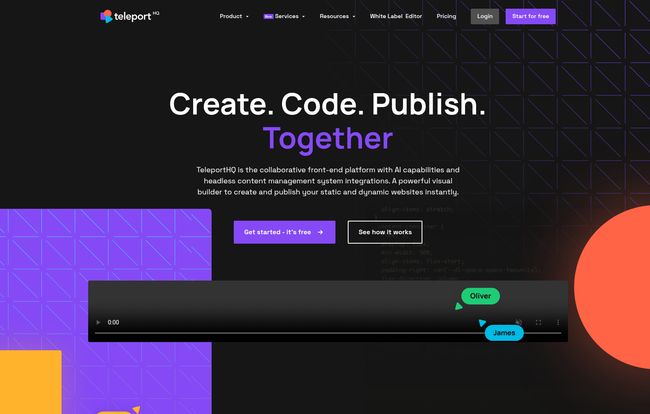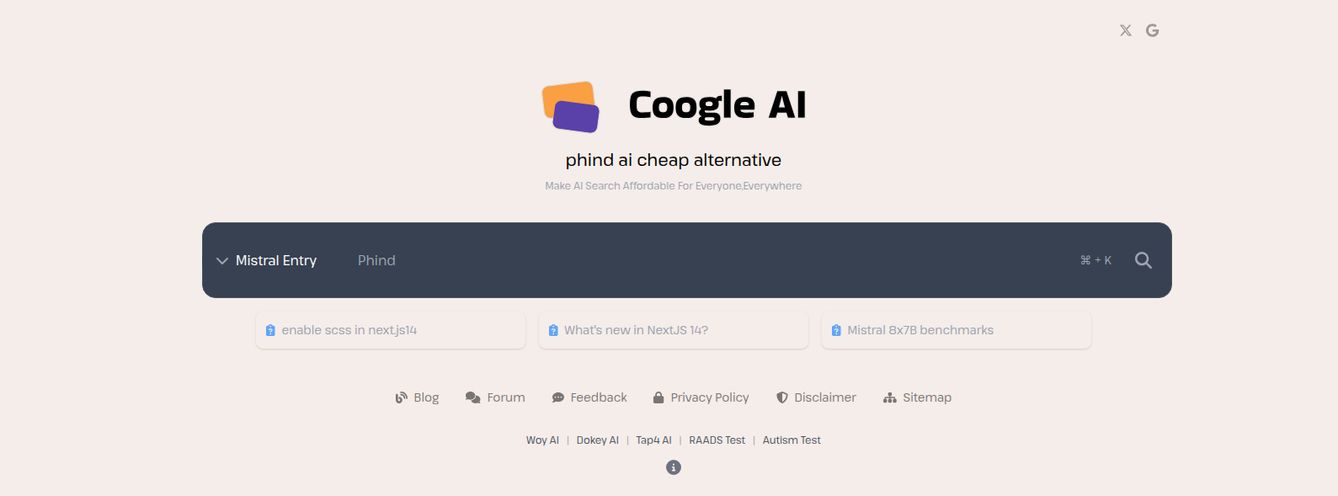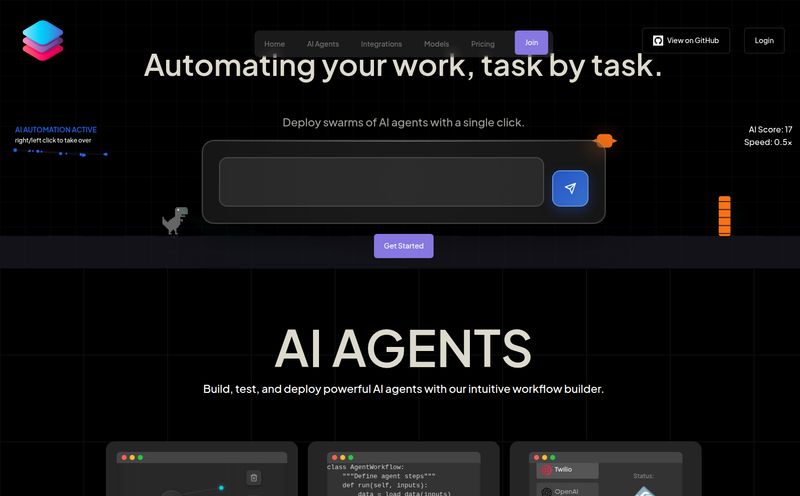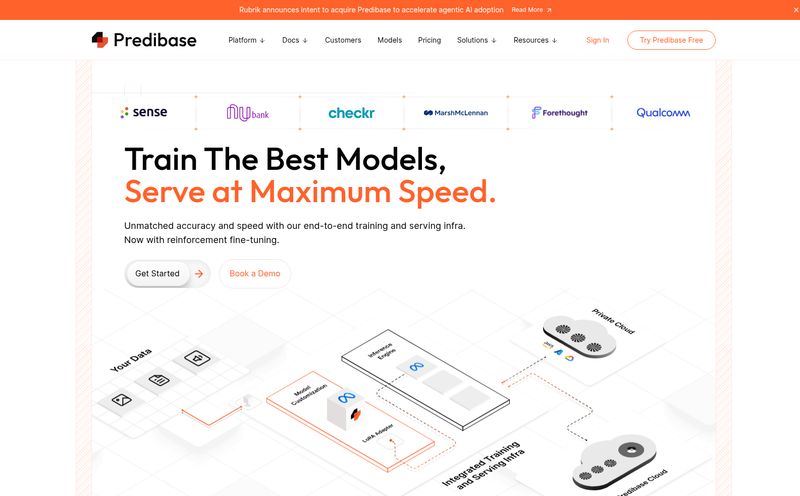As someone who's spent years straddling the worlds of SEO, content, and front-end development, I've seen my fair share of 'game-changing' tools. You know the ones. They promise to magically turn your beautiful designs into pixel-perfect, production-ready code with the click of a button. More often than not, they spit out a tangled mess of nested divs and inline styles that would make any self-respecting developer want to throw their laptop out the window.
So, when I first heard about TeleportHQ, my skepticism was, let's say... healthy. Another low-code platform promising to bridge the gap between designers and developers? Yawn. But then I started poking around. And I kept poking. And what I found was... surprisingly good. Good enough that I feel compelled to sit down and write about it.
This isn't just another platform. It feels different. It feels like it was built by people who have actually lived through the pain of the design-to-dev handoff. People who get it.
So, What is This TeleportHQ Thing Anyway?
At its core, TeleportHQ is a collaborative front-end platform. Think of it as a shared workspace where your design team and your development team can actually work together instead of just throwing files over a digital wall. It combines a powerful visual UI builder with some nifty content modeling tools.
You can build entire static websites visually, component by component, and see the code being generated in real-time. We're talking React, Next.js, Vue, and other modern JavaScript frameworks. It’s not just about building from scratch, either. It has a pretty slick Figma plugin that lets you import existing designs, which is a massive time-saver.

Visit TeleportHQ
The whole idea is to speed up the process of getting from a design concept to a live, functional website without sacrificing code quality. A tall order, I know. But they might be onto something.
Bridging the Great Divide: Design vs. Code
The eternal struggle. Designers craft these beautiful, intricate user interfaces in Figma or Sketch. They hand them off, beaming with pride. Then the developer opens the file and immediately starts finding all the little inconsistencies, the impossible-to-code animations, and the general lack of a structured system. It's a tale as old as time (or at least as old as web design).
TeleportHQ tries to act as a peacemaker in this conflict. It’s like a United Nations translator for the design and dev worlds.
A Visual Builder That Speaks Code
The visual builder is the heart of the platform. You drag and drop, you resize, you style... all the stuff you'd expect. But here’s the kicker: as you're doing this, TeleportHQ is writing clean, component-based code in the background. You can literally have the visual editor open on one side of your screen and the code output on the other, watching it update live. It's mesmerizing, and more importantly, it helps designers understand the structure their creative choices produce.
That Figma Plugin is a Big Deal
I’ve used a lot of 'Figma-to-code' plugins, and most of them are garbage. They create absolute positioning for everything and produce code that's completely unusable. The TeleportHQ plugin is one of the better ones I've seen. It does a surprisingly decent job of interpreting Figma's auto-layout and components into a structured format. It's not perfect—you'll still need to do some cleanup and optimization—but it gets you 80% of the way there, which is a huge win in my book.
A Closer Look at the Features
Okay, let's get into the weeds a bit. What are the standout features that make this tool worth talking about?
- Clean Code Export: This is the big one. The ability to export your visual creations into production-ready code for frameworks like React, Next.js, and Vue is the main selling point. The code is surprisingly clean and maintainable.
- Headless CMS Integration: You can model your content structures right inside TeleportHQ and hook it up to your favorite headless CMS. This means you can build dynamic, content-driven sites, not just simple static pages.
- Real-Time Collaboration: Just like in Figma or Google Docs, multiple team members can be in a project at the same time. A designer can be tweaking a component while a developer is connecting it to a data source. It's chaotic in the best way possible.
- One-Click Publishing: Once you're ready, you can deploy your site directly to services like Vercel with a single click or publish it to your own custom domain. It simplifies the whole DevOps side of things, which is a blessing for smaller teams.
Of course, it's not all sunshine and rainbows. There's a learning curve, especially if you're not already familiar with component-based architecture. And you become somewhat reliant on the platform's ecosystem for the visual building process. But these are minor quibbles in the grand scheme of things.
The All-Important Question: TeleportHQ Pricing
Alright, let's talk money. This is often where these cool new tools fall apart, with pricing models that make your eyes water. TeleportHQ's approach is actually quite reasonable, especially for what you get.
"We offer everything you need to start building, and we provide different plans for you or your team as your projects scale and your needs grow." - TeleportHQ
The Free Plan
There's a Free tier, which is great for kicking the tires. You get up to 3 projects and 2 pages per project. It's limited, for sure, with only 5MB of asset storage. Think of it less as a workable plan and more as an extended demo. Its perfect for figuring out if the workflow clicks with you.
The Professional Plan
This is where the magic happens. For $9 per editor, per month (when billed annually), you get pretty much everything an individual or small team would need. Unlimited projects, unlimited pages, professional templates, the AI code assistant, custom domain support, and that sweet, sweet Vercel integration. For the price of two fancy coffees a month, this feels like a steal.
Agency, Enterprise & More
For the big players, there are Agency and Enterprise plans. These are 'contact us for pricing' deals, which is standard. They add features like advanced permissions, custom storage options, and dedicated account managers. They also offer a separate White Label Editor if you want to embed the entire TeleportHQ experience into your own product under your own brand. Pretty neat for SaaS companies or large agencies.
Who Is This Tool Really For?
After spending some quality time with it, I've got a good sense of who will love TeleportHQ:
- Freelancers & Small Agencies: The ability to quickly go from design to a live, coded-out site is invaluable. It drastically cuts down on development time, allowing you to take on more projects.
- Startups: When you need to build an MVP or a marketing site fast without hiring a massive front-end team, this is a fantastic option.
- Designers Who Want to Code (a little): It’s an amazing educational tool. You can see how your design decisions translate into actual code structure, helping you become a more technically-minded designer.
- Developers Who Hate CSS: Let’s be honest, many backend and full-stack devs would rather not spend hours tweaking CSS. This lets them build the UI visually and then focus on the logic and data integration.
Who is it not for? If you're building an incredibly complex, state-heavy web application, you'll probably still want to code it from the ground up. But for 90% of the static sites, marketing pages, and component libraries out there? This is a serious contender.
Frequently Asked Questions about TeleportHQ
- Is the code exported from TeleportHQ actually good?
- Surprisingly, yes. It's component-based, relatively clean, and much better than what you get from older visual editors. You might need to refactor a few things for complex projects, but it's a fantastic starting point.
- Can I use this with my existing headless CMS?
- Yes, it's designed for that. It has content modeling tools built-in and is meant to integrate with popular headless CMS platforms to pull in dynamic content.
- What's the difference between an 'editor' and a 'viewer' in the pricing?
- An editor is a paid seat that can create and modify projects. A viewer can see projects and leave comments, which is useful for clients or project managers who just need to give feedback. The Professional plan includes unlimited viewers.
- Is TeleportHQ better than Webflow or Framer?
- It's different. Webflow and Framer are more all-in-one platforms that include hosting and their own CMS. TeleportHQ is focused purely on the front-end build and code generation, giving you the flexibility to host anywhere and use any backend or CMS you want. It's less of a walled garden.
- Can I import my existing website into TeleportHQ?
- Not directly. The primary import method is from Figma designs. You can't just plug in a URL and have it deconstruct a live site.
My Final Verdict
I went into this review expecting to be disappointed, but I'm walking away genuinely impressed. TeleportHQ isn't just another tool; it’s a smart, well-executed solution to a problem that has plagued our industry for years. It respects both design and code, creating a collaborative environment that can genuinely speed up development without creating a technical debt nightmare.
The pricing is fair, the feature set is robust, and the focus on clean code export is exactly what the market needs. If you're building on the Jamstack, working in a team with designers and developers, or you're a freelancer looking to work faster, you owe it to yourself to give TeleportHQ a try. It might just be the bridge you've been looking for.



